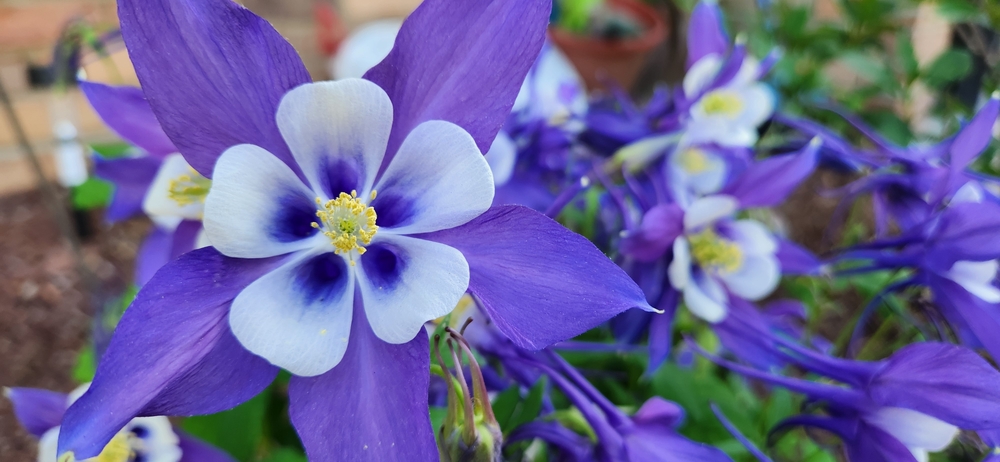Colorado’s state flower, the columbine, is as majestic and distinctive as the state itself. With its striking, delicate petals and vibrant colors, the columbine embodies the beauty of Colorado’s sweeping mountain ranges, symbolizing both the natural charm and the rugged spirit of this world-renowned landscape. But what exactly makes the columbine so significant to Colorado? Let’s dive into the history of the Colorado state flower, explore some fun facts, and give you helpful tips on how to grow and care for this unique and stunning flower.
History of the Colorado State Flower
The columbine, specifically Aquilegia caerulea, was designated as Colorado’s state flower in 1925, cementing its place as a symbol of the state’s wild beauty. The flower’s connection to Colorado dates back to the early days of the state’s exploration, as it was one of the first native plants discovered by European settlers and explorers. The columbine’s name is derived from the Latin word aquila, meaning “eagle,” due to the shape of its petals, which resemble the wings of an eagle in flight. The plant’s elegance and resilience make it an ideal representation of Colorado’s famous “Wild West” countryside.
Prior to becoming the official state flower, the columbine was already a favorite plant throughout Colorado. Its vibrant colors and graceful appearance were admired by both Native American tribes and early settlers alike. The flower’s popularity was so strong that it was commonly used in floral arrangements and featured prominently in artwork inspired by the Colorado wilderness.
When and Why It Was Chosen as the State Flower
The decision to make the columbine the official state flower was made in 1925 by the Colorado State Legislature, following a campaign by school children across the state. The students were asked to vote on a flower that would best represent Colorado’s beauty and spirit, and the columbine came out on top. This democratic process highlighted the deep connection that Coloradoans had with the flower, as well as its strong presence in the state’s natural environment.
The columbine’s selection was not only about its physical beauty but also its symbolism. The flower’s delicate yet resilient nature reflects the state’s rugged yet graceful mountains, as well as the people who call Colorado home. The columbine thrives in the state’s high altitudes and diverse climates, making it the perfect botanical emblem for a state known for its wild landscapes and dynamic weather patterns.
8 Fun Facts About the Columbine
- The plant can bloom in shades of purple, red, pink, and yellow, beyond it’s trademark blue and white standard.
- The columbine is a symbol of strength and resilience, representing the rugged beauty of Colorado. In some cultures, the flower is also associated with love and hope due to its delicate yet enduring nature.
- The columbine flower is known for attracting hummingbirds, butterflies, and bees with its sweet nectar. Its long, tubular shape makes it especially appealing to hummingbirds, which are the flower’s primary pollinators.
- While the columbine is best known as the state flower of Colorado, it is native to much of North America. It can be found growing in the wild across the western United States, particularly in mountainous regions.
- As beautiful as the columbine is, it is toxic to pets if ingested. Keep this in mind if you have curious animals that might be tempted to nibble on your plants.
- They can survive in high altitudes, sometimes growing as high as 10,000 feet, where the air is thin and the temperatures are cooler.
- The columbine has been used in traditional medicine for its soothing properties. It was once believed to have healing powers, particularly for respiratory issues.
Growing and Caring for the Columbine
Soil
Columbines prefer well-draining soil that is slightly acidic to neutral. They are not particularly picky about the soil’s texture but do best in loamy or sandy soil. If you have heavy clay soil, consider amending it with compost to improve drainage.
Sunlight
While columbines can tolerate full sun, they thrive in partial shade, especially in hotter climates. In Colorado, where summers can get quite hot, planting your columbine in a spot that gets afternoon shade can help protect the plant from the intense midday heat.
Watering
Columbines prefer moist soil, but they do not like to be waterlogged. Water your plant regularly to keep the soil moist, especially during dry spells, but ensure that the soil has good drainage to prevent root rot.
Zones
The columbine is hardy in USDA zones 3-9, making it suitable for a wide range of climates. In Colorado, it thrives at higher elevations but can also be grown in lower regions with proper care.
Pruning
Once the columbine has finished blooming, it’s a good idea to deadhead the flowers to promote more blooms and prevent the plant from going to seed too early. In the fall, you can cut back the plant to about 2-3 inches above the ground to prepare it for the winter months.
Companion Plants
The columbine pairs beautifully with other wildflowers and perennials, such as lupines, daisies, and lavender. Its airy, delicate appearance contrasts nicely with the more robust forms of these plants, creating a dynamic and colorful garden display.
Get Growing!
The Colorado state flower, the columbine, is much more than just a pretty bloom. With its rich history, unique symbolism, and fascinating characteristics, the columbine truly represents the beauty and spirit of Colorado. Whether you’re admiring it in the wild or growing it in your garden, the columbine’s resilience and vibrant colors make it a lasting symbol of the Centennial State.
If you’re looking to bring the beauty of the columbine or other flowers into your home, be sure to check out our flower delivery options. And for those interested in exploring more state flowers, take a look at our full list of state flowers for even more floral inspiration!
Shop All



